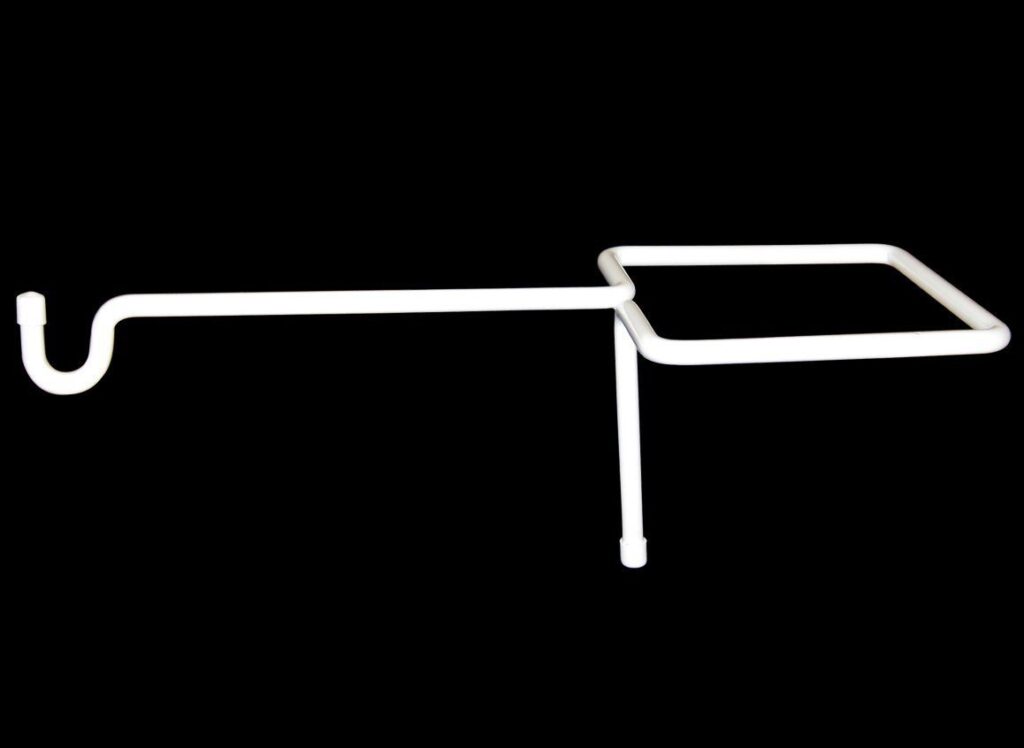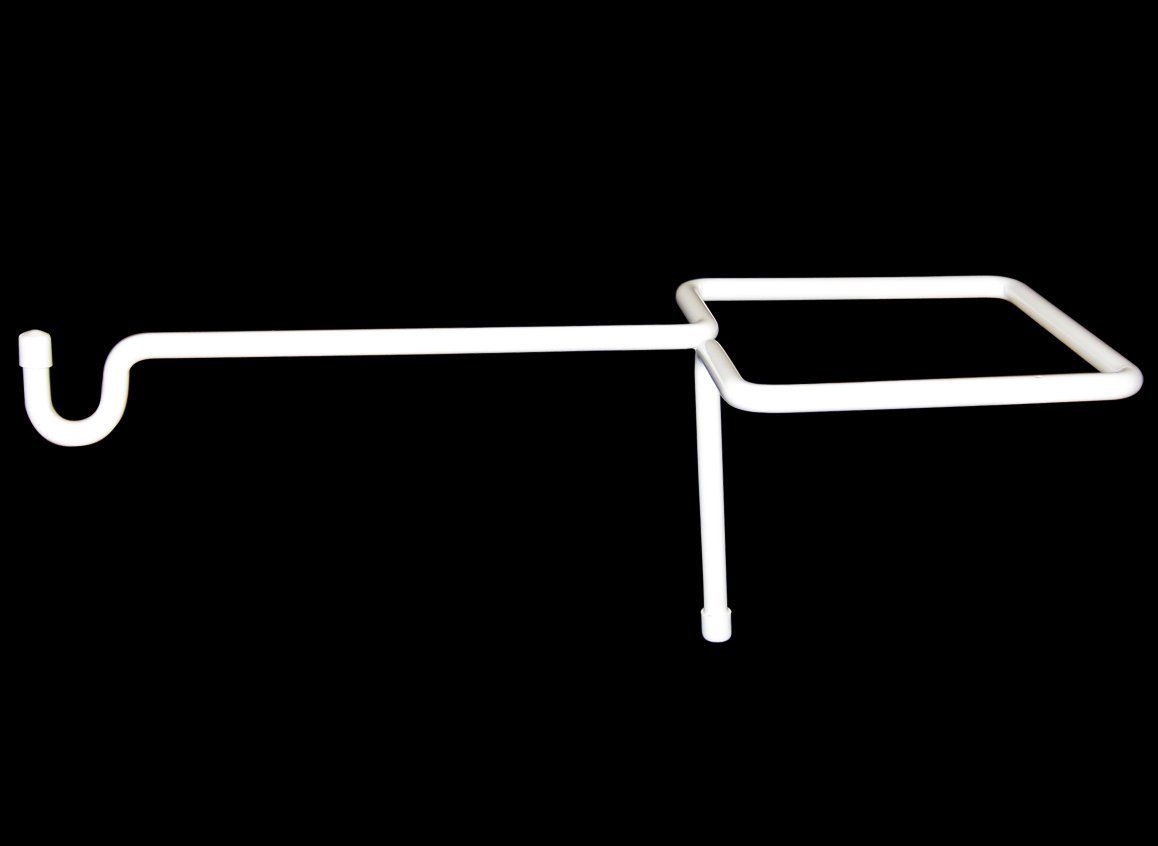
Elevate Your Garden: The Ultimate Guide to Vinyl Fence Rail Plant Hangers
Vinyl fences offer a clean, modern aesthetic to any property. However, their smooth, often featureless surfaces can sometimes feel a bit…sterile. Enter vinyl fence rail plant hangers – a simple yet transformative solution to add pops of color, greenery, and personality to your outdoor space. These hangers provide a versatile and damage-free way to display your favorite plants, turning your fence into a living wall. This guide will cover everything you need to know about selecting, installing, and maintaining vinyl fence rail plant hangers, ensuring your garden flourishes without compromising the integrity of your fence.
Why Choose Vinyl Fence Rail Plant Hangers?
Before diving into the specifics, let’s explore the compelling reasons to incorporate vinyl fence rail plant hangers into your garden design:
- No Damage to Your Fence: Unlike traditional methods like drilling or nailing, vinyl fence rail plant hangers attach securely to the fence rail without causing any permanent damage. This is crucial for maintaining your fence’s warranty and preventing unsightly holes.
- Versatility and Flexibility: These hangers come in various sizes, styles, and materials, accommodating a wide range of plant types and pot sizes. You can easily rearrange them to create different visual effects or adapt to changing seasons.
- Enhanced Curb Appeal: A well-placed selection of plants can dramatically enhance the curb appeal of your home. Vinyl fence rail plant hangers allow you to create a vibrant and welcoming atmosphere.
- Space-Saving Solution: If you have limited ground space, these hangers provide an excellent way to grow plants vertically, maximizing your gardening potential.
- Easy Installation: Most vinyl fence rail plant hangers require no tools for installation, making them a quick and easy DIY project.
Types of Vinyl Fence Rail Plant Hangers
The market offers a variety of vinyl fence rail plant hangers, each with its own advantages. Understanding the different types will help you choose the best option for your needs:
Over-the-Rail Hangers
These are the most common type of vinyl fence rail plant hangers. They simply hook over the top rail of the fence, providing a stable and secure platform for your plants. They’re easy to install and remove, making them ideal for temporary or seasonal displays.
Adjustable Hangers
Adjustable hangers allow you to customize the height and position of your plants. This is particularly useful if you have plants of different sizes or if you want to create a staggered effect. These often use a screw mechanism to tighten onto the fence rail, but still avoid piercing the vinyl.
Basket Hangers
Designed specifically for hanging baskets, these hangers feature a curved arm that extends outward from the fence rail. They provide ample space for the basket to hang freely, allowing for optimal air circulation and sunlight exposure.
Self-Watering Planter Hangers
Some hangers come with built-in self-watering planters. These are perfect for busy gardeners or for plants that require consistent moisture. The planter typically includes a reservoir that slowly releases water to the roots, reducing the need for frequent watering.
Material Considerations
While the primary function remains the same, the materials used in vinyl fence rail plant hangers can vary. Common materials include:
- Powder-Coated Steel: Durable and weather-resistant, powder-coated steel hangers are a popular choice for their strength and longevity.
- Plastic/Resin: Lightweight and affordable, plastic or resin hangers are a good option for smaller plants. However, they may not be as durable as steel hangers.
- Wrought Iron: A classic and elegant choice, wrought iron hangers add a touch of sophistication to your garden. They are typically more expensive than other options but offer superior strength and durability.
Choosing the Right Vinyl Fence Rail Plant Hangers
Selecting the perfect vinyl fence rail plant hangers involves considering several factors:
- Fence Rail Dimensions: Measure the width and thickness of your fence rail to ensure that the hangers will fit securely. Many hangers specify the range of rail sizes they accommodate.
- Weight Capacity: Check the weight capacity of the hangers to ensure that they can support the weight of your plants, especially when the soil is wet. Overloading the hangers can cause them to bend or break, potentially damaging your plants or fence.
- Style and Aesthetics: Choose hangers that complement the style of your fence and garden. Consider the color, material, and design of the hangers to create a cohesive look.
- Weather Resistance: Opt for hangers that are weather-resistant and rust-proof, especially if you live in an area with harsh weather conditions.
- Plant Type: Consider the type of plants you want to display. Hanging baskets require different hangers than small potted plants.
Installing Vinyl Fence Rail Plant Hangers: A Step-by-Step Guide
Installing vinyl fence rail plant hangers is typically a straightforward process. Here’s a general guide:
- Gather Your Supplies: You’ll need the vinyl fence rail plant hangers, your plants in their pots or baskets, and a level (optional).
- Clean the Fence Rail: Wipe down the fence rail to remove any dirt or debris. This will ensure a secure and stable connection.
- Position the Hangers: Place the hangers over the fence rail at the desired locations. Ensure that they are evenly spaced and aligned.
- Secure the Hangers (if necessary): Some hangers may have a tightening mechanism or a clip that needs to be secured. Follow the manufacturer’s instructions.
- Hang Your Plants: Carefully hang your plants on the hangers. Ensure that they are balanced and stable.
- Adjust as Needed: Step back and assess the overall appearance. Adjust the position of the hangers or plants as needed to achieve the desired look.
Maintaining Your Vinyl Fence Rail Plant Hangers
Proper maintenance will extend the life of your vinyl fence rail plant hangers and keep your garden looking its best:
- Regular Cleaning: Clean the hangers regularly with a mild soap and water solution to remove any dirt or grime.
- Inspect for Damage: Periodically inspect the hangers for any signs of damage, such as rust, cracks, or bends. Replace any damaged hangers immediately.
- Winter Storage: If you live in an area with harsh winters, consider removing the hangers and storing them indoors to protect them from the elements.
- Weight Management: Be mindful of the weight of your plants, especially after watering. Overloading the hangers can cause them to fail.
Plant Selection for Vinyl Fence Rail Hangers
Choosing the right plants for your vinyl fence rail plant hangers is crucial for creating a visually appealing and thriving garden. Consider the following factors:
- Sunlight Exposure: Select plants that are appropriate for the amount of sunlight your fence receives. Some plants thrive in full sun, while others prefer partial shade.
- Water Requirements: Choose plants that have similar water requirements to simplify your watering routine.
- Growth Habit: Consider the growth habit of the plants. Trailing plants like petunias and ivy are ideal for hanging baskets, while upright plants like geraniums and impatiens are better suited for individual pots.
- Color and Texture: Mix and match plants with different colors and textures to create visual interest.
- Maintenance Requirements: Choose plants that are relatively low-maintenance if you have limited time for gardening.
Here are some popular plant choices for vinyl fence rail plant hangers:
- Petunias
- Geraniums
- Impatiens
- Begonias
- Trailing Verbena
- Sweet Potato Vine
- Ivy
- Fuchsias
Creative Ideas for Using Vinyl Fence Rail Plant Hangers
Beyond simply hanging plants, vinyl fence rail plant hangers can be used in a variety of creative ways to enhance your outdoor space:
- Create a Living Wall: Arrange multiple hangers in a grid pattern to create a stunning living wall.
- Add Vertical Interest: Use hangers of different heights to add vertical interest to your fence.
- Highlight Architectural Features: Use hangers to draw attention to architectural features, such as gates or corners.
- Create a Privacy Screen: Use hangers with dense foliage to create a natural privacy screen.
- Hang Decorative Items: Use hangers to display decorative items, such as wind chimes, lanterns, or garden ornaments.
Troubleshooting Common Issues
While vinyl fence rail plant hangers are generally easy to use, you may encounter some common issues:
- Hangers Slipping: If the hangers are slipping, try tightening the screws or adding a rubber grip to the inside of the hanger.
- Hangers Bending: If the hangers are bending, reduce the weight of the plants or replace the hangers with a sturdier option.
- Plants Drying Out: If the plants are drying out quickly, increase the watering frequency or add a layer of mulch to the soil.
- Plants Not Thriving: If the plants are not thriving, ensure that they are receiving the appropriate amount of sunlight and water. You may also need to fertilize them regularly.
Conclusion
Vinyl fence rail plant hangers are a simple yet effective way to transform your fence into a beautiful and functional garden feature. By choosing the right hangers, selecting the appropriate plants, and following proper installation and maintenance procedures, you can create a stunning outdoor space that you’ll enjoy for years to come. Embrace the versatility of vinyl fence rail plant hangers and let your creativity blossom! [See also: Best Plants for Hanging Baskets] [See also: How to Maintain a Vinyl Fence] [See also: DIY Garden Projects for Beginners]

